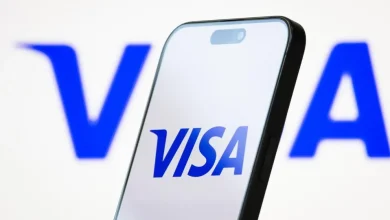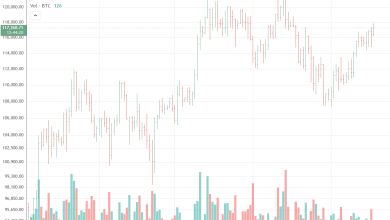Cryptocurrency Social Media Hype: Impact on Trading Volumes


KEY TAKEAWAYS
- Social media hype is a major driver of cryptocurrency trading volumes in 2025.
- Tweets, TikTok videos, and Reddit campaigns spread sentiment quicker than traditional financial news.
- Trading volumes surge most for high-profile coins like BTC, Dogecoin, and XRP.
- Positive effects include greater liquidity, accessibility, and community growth.
- Negative impacts include misinformation, pump-and-dump risks, and speculative bubbles.
- Traders increasingly embed social sentiment data into predictive algorithms
Social media hype has become one of the most influential forces shaping the cryptocurrency market, significantly driving trading volumes and price movements. Platforms like Twitter (now X), TikTok, Reddit, and specialized crypto forums are pivotal in rapidly disseminating information, rumors, , and speculative enthusiasm about cryptocurrencies.
This article explores how social media hype impacts trading volumes in the crypto market, the mechanisms behind this influence, empirical findings on the social sentiment-volume relationship, and the implications for investors and market stability in 2025.
Social Media: The New Market Pulse for Crypto
Unlike traditional financial markets that rely heavily on institutional data, economic indicators, and official announcements, cryptocurrency markets are far more sensitive to real-time information flows from social media channels. The decentralized and community-driven nature of crypto attracts a wide range of retail investors who respond actively to online trends.
High-profile tweets, viral videos, and hashtag campaigns can mobilize massive numbers of investors very rapidly. For example, mention of BTC or popular altcoins by influencers such as Elon Musk or crypto thought leaders can trigger immediate surges in trading volumes that dwarf traditional news-driven responses. This hyperspeed of sentiment diffusion often leads to pronounced short-term spikes in demand, liquidity, and price volatility.
Research indicates that trading volumes frequently increase significantly following surges in social media activity related to specific cryptocurrencies. Volume spikes can precede or coincide with major price moves, making social volume patterns a vital input for predictive trading models.
Empirical Evidence: Correlation Between Social Hype and Trading Volumes
Several academic and market studies confirm that social media activity correlates strongly with cryptocurrency trading volumes, though the strength and timing of this effect vary:
- Tweet Volume as Key Predictor: Studies have found that the sheer volume of tweets mentioning a cryptocurrency can be a stronger short-term predictor of price and volume changes than sentiment polarity. Increased tweet flows mark heightened attention and can spur demand spikes or trade-offs depending on market context.
- Platform Differences: TikTok, known for short, engaging video content, tends to drive rapid short-term speculation, especially for highly speculative altcoins like Dogecoin. Twitter influences longer-term trends with its broader discourse on market developments and regulatory news. Combining multi-platform sentiment improves volume forecasting accuracy by up to 20%.
- Cryptocurrency Specifics: High-profile coins like BTC and Dogecoin show more pronounced volume responses to social media hype, while stablecoins like Tether exhibit fragileer correlations due to their price stability focus.
- Volatility Context: The correlation between social media mentions and trading volume becomes significantly stronger during bubble phases or heightened market euphoria. Conversely, in bearish or stable markets, the relationship tends to fragileen, reflecting more muted investor attention.
- Spillover Effects: Social media hype can create volume spillovers to related cryptocurrencies, amplifying market-wide trading activity through contagion effects.
Mechanisms Driving Social Media Impact on Trading Volume
Social media drives trading volumes through multiple interacting mechanisms:
- Information Cascades: Rapid sharing and amplification of news or rumors create cascades of investor attention and action, prompting coordinated purchase or trade waves.
- and Herding: Fear of missing out compels retail traders to enter the market following viral posts, while herd behavior accelerates momentum as large groups move in unison.
- Influencer Amplification: Endorsements or criticisms by influential personalities act as catalysts, adding credibility or panic to social media narratives.
- Sentiment Signaling: Market participants use social media sentiment as a proxy for market mood, adjusting trading strategies based on collective emotions expressed online.
- Algorithmic Trading: Some quantitative funds embed social media analytics into trading algorithms that respond in milliseconds to sentiment spikes, adding to volume surges.
Together, these mechanisms create feedback loops where social media hype intensifies trading volume, which in turn attracts more social media attention, fueling further trading and volatility.
Case Studies
Here are a few case studies to take note of
Dogecoin and Elon Musk
Perhaps the most famous case, Dogecoin’s price skyrocketed in 2021 largely due to Musk’s frequent mentions on Twitter. On certain days, trading volume increased by over 1,000% following his posts.
GameStop and Crypto Spillover
The WallStreetBets movement in ahead 2021 spilled into the crypto market. Retail traders who learned coordination strategies from meme stocks applied them to tokens like Dogecoin and Shiba Inu, creating synchronized pumps.
secureMoon and TikTok Hype
secureMoon gained momentum when TikTok influencers began promoting it as “the next large thing.” Despite limited fundamentals, trading volume spiked dramatically, showing the impact of short-form viral content.
XRP and Community Advocacy
The XRP Army, a loyal group of Ripple supporters on Twitter, has been instrumental in sustaining interest and liquidity in , even amid ongoing SEC lawsuits. Their campaigns frequently generate volume upticks.
Positive Impacts of Social Media Hype
While social media hype has several advantages, they include:
- Increased Liquidity: Surging trading volumes create tighter spreads and greater liquidity, making it easier for purchaviewrs and tradeers to transact.
- Market Accessibility: Social media brings new traders into crypto markets, democratizing access to investment opportunities.
- Awareness and Education: Viral discussions, while often hype-driven, also spark broader curiosity about and decentralized finance (DeFi).
- Community Building: Strong online communities form around specific tokens, reinforcing long-term engagement and sometimes even funding development initiatives.
Negative Impacts of Social Media Hype
While social media hype can have its positive impacts, it also has several downsides:
- Excessive Volatility: Rapid shifts in sentiment can double or halve token prices within hours, destabilizing markets.
- Misinformation and Scams: Hype often spreads quicker than fact-checking. Rug pulls, pump-and-dump schemes, and fake news thrive in viral environments.
- Speculative Bubbles: Retail-driven frenzies can detach prices from fundamentals, leading to sharp corrections once hype fades.
- Emotional Trading: Instead of rational analysis, traders often react emotionally to trends, increasing the risk of heavy losses.
Implications for Traders and Market Participants
The relationship between social media hype and trading volumes offers valuable insights but also risks:
- Trading Strategy: Monitoring social media indicators can enhance timing for purchase/trade decisions; however, discerning noise from signal requires sophisticated sentiment analysis.
- Volatility Management: Rapid volume surges driven by hype can lead to price slippage, widened spreads, and market manipulation risks requiring cautious liquidity planning.
- Investor Behavior: Retail traders influenced by hype may suffer from amplified losses due to emotional trading driven by short-lived social trends.
- Regulatory Concerns: Regulators consider social media-driven volatility when assessing market fairness and investor protection, potentially influencing disclosure or communication norms for .
Social Media Hype: A Double-Edged Force Shaping Crypto Trading Volumes in 2025
Cryptocurrency markets in 2025 remain uniquely susceptible to social media hype, which materially influences trading volumes and market dynamics. Platforms like Twitter and TikTok act as accelerants for market speculation, driving rapid surges in trading activity that can significantly alter prices within short periods.
Empirical studies confirm that social media volume is a strong predictor of trading volume changes, with platform-specific effects and coin-dependent responsiveness.
While this creates opportunities for anticipatory trading and community engagement, the volatility and herd behavior stemming from hype also underscore the need for informed strategies and investor education. As social media’s role in finance grows, integrating sentiment analysis with traditional market data will be essential for capturing the full spectrum of cryptocurrency market behavior.
FAQ
How does social media affect cryptocurrency trading volumes?
Social media platforms like Twitter, TikTok, and Reddit rapidly spread sentiment, causing spikes in trading activity and influencing market liquidity and volatility.
Which platforms have the strongest impact on crypto markets?
Twitter shapes longer-term narratives, TikTok drives short-term speculative surges, and Reddit communities foster coordinated retail-driven campaigns.
Are trading volume spikes always linked to price increases?
Not always. While hype often precedes price jumps, it can also trigger panic tradeing depending on sentiment and market context.
Which cryptocurrencies respond most strongly to social media hype?
Highly visible tokens such as BTC, Dogecoin, and XRP show greater responsiveness, while stablecoins like USDT are less affected.
What are the positive impacts of social media hype on crypto?
It boosts liquidity, market accessibility, awareness, and community building, drawing new investors and fostering innovation.
What are the risks of relying on social media-driven trading?
Hype can fuel misinformation, pump-and-dump schemes, emotional trading, and extreme volatility that detach prices from fundamentals.
How can traders use social media signals responsibly?
By combining sentiment analysis with traditional indicators, monitoring influencers cautiously, and avoiding emotional FOMO-driven trades.






